9-Icosanol
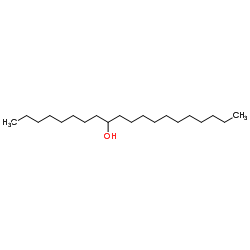
9-Icosanol structure
|
Common Name | 9-Icosanol | ||
|---|---|---|---|---|
| CAS Number | 5333-42-6 | Molecular Weight | 298.547 | |
| Density | 0.8±0.1 g/cm3 | Boiling Point | 357.7±10.0 °C at 760 mmHg | |
| Molecular Formula | C20H42O | Melting Point | -1-1ºC(lit.) | |
| MSDS | Chinese USA | Flash Point | 129.7±7.1 °C | |
| Name | 2-Octyldodecan-1-ol |
|---|---|
| Synonym | More Synonyms |
| Density | 0.8±0.1 g/cm3 |
|---|---|
| Boiling Point | 357.7±10.0 °C at 760 mmHg |
| Melting Point | -1-1ºC(lit.) |
| Molecular Formula | C20H42O |
| Molecular Weight | 298.547 |
| Flash Point | 129.7±7.1 °C |
| Exact Mass | 298.323578 |
| PSA | 20.23000 |
| LogP | 9.19 |
| Vapour Pressure | 0.0±1.8 mmHg at 25°C |
| Index of Refraction | 1.452 |
| Water Solubility | Practically insoluble in water, miscible with ethanol (96 per cent). |
|
Section 1. Chemical Product and Company Identification 2-Octyl-1-dodecanol Common Name/ Trade Name Manufacturer Commercial Name(s) Synonym
Chemical Name Chemical Family 2-Octyl-1-dodecanol Section 4. First Aid Measures Eye ContactCheck for and remove any contact lenses. In case of contact, immediately flush eyes with plenty of water for at least 15 minutes. Get medical attention. Skin ContactIn case of contact, immediately flush skin with plenty of water. Cover the irritated skin with an emollient. Remove contaminated clothing and shoes. Wash clothing before reuse. Thoroughly clean shoes before reuse. Get medical attention. Serious Skin ContactWash with a disinfectant soap and cover the contaminated skin with an anti-bacterial cream. Seek medical attention. InhalationIf inhaled, remove to fresh air. If not breathing, give artificial respiration. If breathing is difficult, give oxygen. Get medical attention. Serious InhalationNot available. IngestionDo NOT induce vomiting unless directed to do so by medical personnel. Never give anything by mouth to an unconscious person. If large quantities of this material are swallowed, call a physician immediately. Loosen tight clothing such as a collar, tie, belt or waistband. Serious IngestionNot available. Section 5. Fire and Explosion Data Flammability of the Product May be combustible at high temperature. Auto-Ignition Temperature 265°C (509°F) Flash PointsCLOSED CUP: 113°C (235.4°F). OPEN CUP: 180°C (356°F). Flammable LimitsNot available. Products of CombustionThese products are carbon oxides (CO, CO2). Fire Hazards in Presence of Slightly flammable to flammable in presence of open flames and sparks, of heat. Various Substances Explosion Hazards in Presence Risks of explosion of the product in presence of mechanical impact: Not available. of Various SubstancesRisks of explosion of the product in presence of static discharge: Not available. Fire Fighting MediaSMALL FIRE: Use DRY chemical powder. and InstructionsLARGE FIRE: Use water spray, fog or foam. Do not use water jet. Special Remarks onNot available. Fire Hazards Special Remarks on Explosion Not available. Hazards Section 6. Accidental Release Measures Small SpillAbsorb with an inert material and put the spilled material in an appropriate waste disposal. Large SpillAbsorb with an inert material and put the spilled material in an appropriate waste disposal. Finish cleaning by spreading water on the contaminated surface and allow to evacuate through the sanitary system. 2-Octyl-1-dodecanol Section 7. Handling and Storage PrecautionsKeep away from heat. Keep away from sources of ignition. Empty containers pose a fire risk, evaporate the residue under a fume hood. Ground all equipment containing material. Do not breathe gas/fumes/ vapor/spray. Avoid contact with skin. Wear suitable protective clothing. If you feel unwell, seek medical attention and show the label when possible. Keep away from incompatibles such as oxidizing agents, acids. StorageKeep container tightly closed. Keep container in a cool, well-ventilated area. Section 8. Exposure Controls/Personal Protection Engineering ControlsProvide exhaust ventilation or other engineering controls to keep the airborne concentrations of vapors below their respective threshold limit value. Ensure that eyewash stations and safety showers are proximal to the work-station location. Personal ProtectionSafety glasses or Splash goggles. Synthetic apron or Lab coat. Gloves (impervious). Respiratory protection is not normally required for normal handling of the vapor pressure of this material at room room temperature. If handling material in areas where ventilation is inadequate or under conditions causing excessive airborne levels of mist or vapor, a vapor respirator may be needed. Personal Protection in Case of Splash goggles. Full suit. Boots. Gloves. Suggested protective clothing might not be sufficient; consult a a Large Spillspecialist BEFORE handling this product. Exposure LimitsNot available. Section 9. Physical and Chemical Properties Physical state and appearance Liquid. (Oily liquid.)OdorNot available. Not available. Taste Molecular Weight298.56 g/mole Colorless. Color pH (1% soln/water)Not applicable. Boiling Point290°C (554°F) Melting Point1°C (33.8°F) Critical TemperatureNot available. Specific Gravity0.836 (Water = 1) 1 kPa (@ 207°C) Vapor Pressure Vapor DensityNot available. Not available. Volatility Odor ThresholdNot available. Water/Oil Dist. Coeff.Not available. Ionicity (in Water)Not available. Dispersion PropertiesNot available. SolubilityInsoluble in cold water, hot water. Section 10. Stability and Reactivity Data StabilityThe product is stable. Instability TemperatureNot available. Conditions of InstabilityExcess heat, incompatible materials Incompatibility with various Reactive with oxidizing agents, acids. substances 2-Octyl-1-dodecanol CorrosivityNot available. Special Remarks onIncompatible with inorganic acids, halogens, oxidizers. Reactivity Special Remarks onNot available. Corrosivity PolymerizationWill not occur. Section 11. Toxicological Information Routes of EntrySkin contact. Eye contact. Toxicity to AnimalsLD50: Not available. LC50: Not available. Chronic Effects on Humans Not available. Other Toxic Effects onHazardous in case of skin contact (irritant). HumansSlightly hazardous in case of ingestion, of inhalation. Special Remarks onNot available. Toxicity to Animals Special Remarks onNot available. Chronic Effects on Humans Special Remarks on otherAcute Potential Health Effects: Toxic Effects on HumansSkin: Causes moderate skin to severe skin irritation. Eyes: Causes mild eye irritation. Inhalation: Low hazard for normal handling. Inhalation of high concentrations of vapor or mist may cause respiratory tract irritation. Ingestion: Expected to be a low hazard. Section 12. Ecological Information EcotoxicityNot available. Not available. BOD5 and COD Possibly hazardous short term degradation products are not likely. However, long term degradation products may Products of Biodegradation arise. Toxicity of the ProductsThe product itself and its products of degradation are not toxic. of Biodegradation Not available. Special Remarks on the Products of Biodegradation Section 13. Disposal Considerations Waste DisposalWaste must be disposed of in accordance with federal, state and local environmental control regulations. 2-Octyl-1-dodecanol Section 14. Transport Information DOT ClassificationNot a DOT controlled material (United States). IdentificationNot applicable. Not applicable. Special Provisions for Transport DOT (Pictograms) Section 15. Other Regulatory Information and Pictograms TSCA 8(b) inventory: 2-Octyl-1-dodecanol Federal and State Regulations CaliforniaCalifornia prop. 65: This product contains the following ingredients for which the State of California has found to cause cancer which would require a warning under the statute: No products were found. Proposition 65 Warnings California prop. 65: This product contains the following ingredients for which the State of California has found to cause birth defects which would require a warning under the statute: No products were found. Other RegulationsEINECS: This product is on the European Inventory of Existing Commercial Chemical Substances (EINECS No. 226-242-9). Canada: Listed on Canadian Domestic Substance List (DSL). China: Listed on National Inventory. Japan: Listed on National Inventory (ENCS). Korea: Listed on National Inventory (KECI). Philippines: Listed on National Inventory (PICCS). Australia: Listed on AICS. WHMIS (Canada) CLASS D-2B: Material causing other toxic effects (TOXIC). Other Classifications DSCL (EEC) R36/38- Irritating to eyes and skin.S26- In case of contact with eyes, rinse immediately with plenty of water and seek medical advice. S36/37- Wear suitable protective clothing and gloves. Health Hazard HMIS (U.S.A.)2 National Fire Protection 1 Flammability 1 Association (U.S.A.) Fire Hazard 2 0 Reactivity Health Reactivity 0 Specific hazard Personal Protection C WHMIS (Canada) (Pictograms) DSCL (Europe) (Pictograms) 2-Octyl-1-dodecanol TDG (Canada) (Pictograms) ADR (Europe) (Pictograms) Protective Equipment Gloves (impervious). Synthetic apron. Wear appropriate respirator when ventilation is inadequate. SECTION 16 - ADDITIONAL INFORMATION N/A |
CHEMICAL IDENTIFICATION
HEALTH HAZARD DATAACUTE TOXICITY DATA
|
| Personal Protective Equipment | Faceshields;full-face respirator (US);Gloves;Goggles;multi-purpose combination respirator cartridge (US);type ABEK (EN14387) respirator filter |
|---|---|
| Hazard Codes | Xi: Irritant; |
| Risk Phrases | R36/37/38 |
| Safety Phrases | 26-36 |
| RIDADR | NONH for all modes of transport |
| RTECS | JR4240000 |
| HS Code | 2905199090 |
|
~92% 
9-Icosanol CAS#:5333-42-6 |
| Literature: GAF Corporation Patent: US4830769 A1, 1989 ; |
|
~43% 
9-Icosanol CAS#:5333-42-6 |
| Literature: Matsu-Ura, Toyomi; Sakaguchi, Satoshi; Obora, Yasushi; Ishii, Yasutaka Journal of Organic Chemistry, 2006 , vol. 71, # 21 p. 8306 - 8308 |
|
~% 
9-Icosanol CAS#:5333-42-6 |
| Literature: US2007/281873 A1, ; |
|
~% 
9-Icosanol CAS#:5333-42-6 |
| Literature: Chemische Berichte, vol. 67, p. 1701 |
|
~% 
9-Icosanol CAS#:5333-42-6 |
| Literature: Comptes Rendus Hebdomadaires des Seances de l'Academie des Sciences, , vol. 204, p. 1656 Annales de Chimie (Cachan, France), , vol. <11> 10, p. 281,369 |
|
~% 
9-Icosanol CAS#:5333-42-6 |
| Literature: Chemische Berichte, , vol. 67, p. 1703 |
|
~% 
9-Icosanol CAS#:5333-42-6 |
| Literature: Chemische Berichte, , vol. 67, p. 1703 |
| Precursor 6 | |
|---|---|
| DownStream 7 | |
| HS Code | 2905199090 |
|---|---|
| Summary | 2905199090. saturated monohydric alcohols. VAT:17.0%. Tax rebate rate:13.0%. . MFN tariff:5.5%. General tariff:30.0% |
|
Development of ciclopirox olamine topical formulations: evaluation of drug release, penetration and cutaneous retention.
Pharm. Dev. Technol. 20(2) , 197-203, (2015) With the aim of reducing system absorption and consequently, the side effects, and simultaneously select a penetration enhancing, three topical formulations with 0.5% ciclopirox olamine (CO) and 15% o... |
|
|
The effect of alcohol structures on the interaction mode with the hexameric capsule of resorcin[4]arene.
Chemistry 18(27) , 8515-20, (2012) After more than a century of research on resorcin[4]arenes (1) it is clear that such systems form spontaneously [1(6)(H(2)O)(8)]-type hexameric capsules in wet, non-polar, organic solvents. However, t... |
|
|
Contact sensitivity to octyldodecanol and trometamol in an anti-itch cream.
Contact Dermatitis 56(5) , 289-90, (2007)
|
| 9-Icosanol |
| Icosan-9-ol |
| EINECS 226-242-9 |
| MFCD01310428 |
| 2-Octyl-1-dodecanol |
| 2-n-Octyl-1-dodecanol |
| Octyldodecanol |
| 9-Eicosanol |




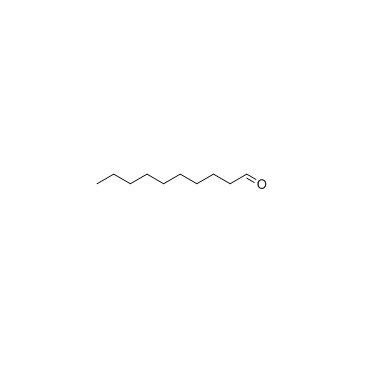
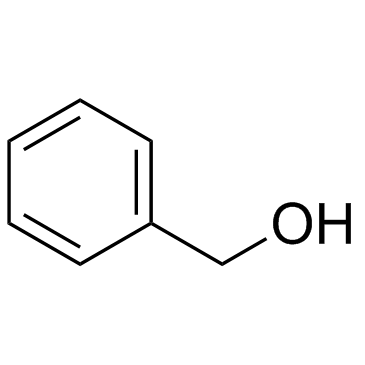


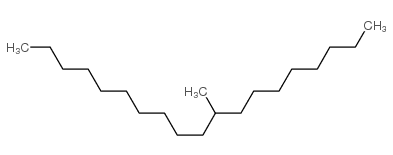 CAS#:13287-24-6
CAS#:13287-24-6![3,6-Bis(5-bromothiophen-2-yl)-2,5-bis(2-octyldodecyl)pyrrolo[3,4-c]pyrrole-1,4(2H,5H)-dione structure](https://image.chemsrc.com/caspic/006/1260685-63-9.png) CAS#:1260685-63-9
CAS#:1260685-63-9 CAS#:74051-84-6
CAS#:74051-84-6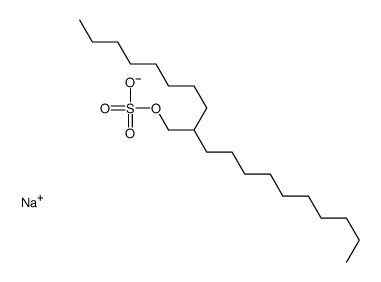 CAS#:78204-54-3
CAS#:78204-54-3 CAS#:62281-06-5
CAS#:62281-06-5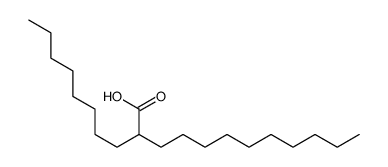 CAS#:40596-46-1
CAS#:40596-46-1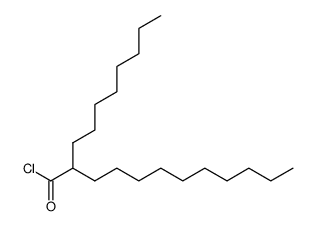 CAS#:86218-06-6
CAS#:86218-06-6
